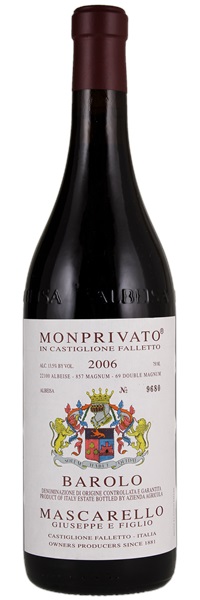ITEM 9807262 - Removed from a professional wine storage facility; Purchased at retail

... an explosive Monprivato endowed with layers of ripe red fruit backed up by firm, muscular tannins that speak with great eloquence.... This is a fabulous effort from Mascarello.
An elegant style, with a hint of wild herbs giving way to strawberry, eucalyptus, licorice and mineral. Though structured, this is deftly balanced, with a mouthwatering finish and a fine, savory aftertaste.
Less fruity and floral and more earthy/spicy on the nose than the '07; exuded notes of red berry liqueur and underbrush with air. This very precise, powerfully structured wine finishes dry, long and youthfully imploded, with subtle spice...
Fresh and autumnal, mulchy and burly. Very much for the long term.